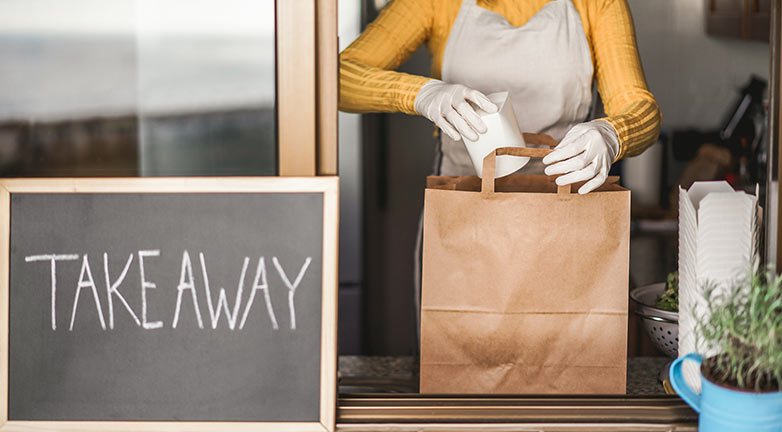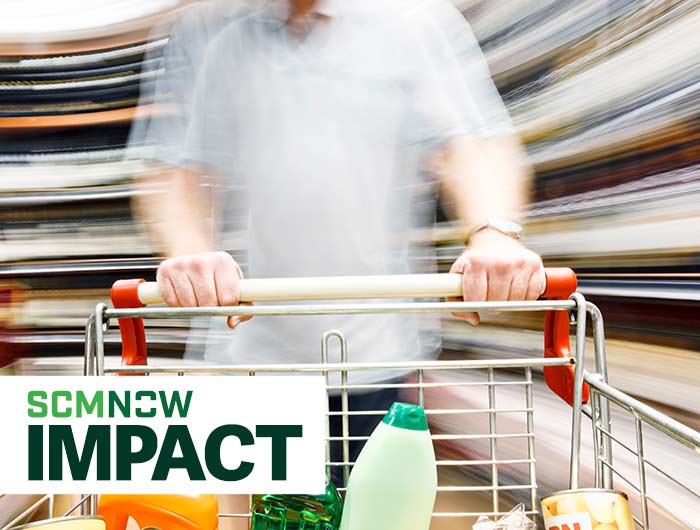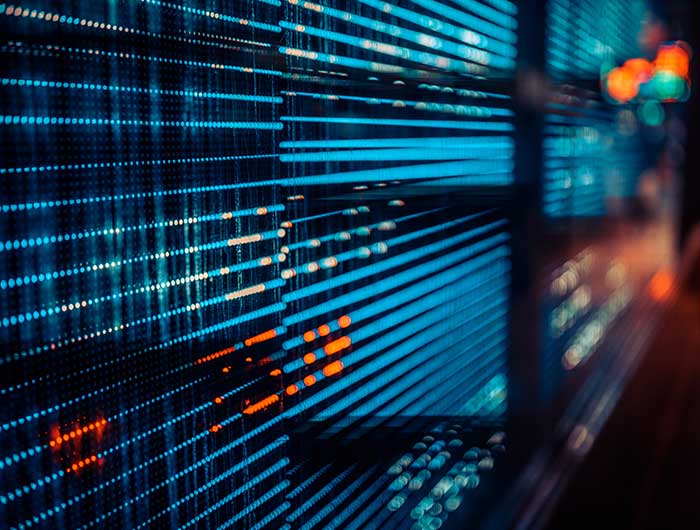During the COVID-19 pandemic, key retailers including Walmart, Kroger, and Bed Bath & Beyond are keeping their businesses operational and protecting their employees and customers by leveraging three key strategies: virtual inventory pooling, last-mile delivery and omnichannel technology. These strategies, which we refer to as real options, are delivering value during the pandemic but will continue to drive business in the future. They infuse companies with the flexibility and agility to survive seismic market disruptions and help them maneuver into stretch opportunities for success, such as by repurposing stores, rebalancing inventory, refining how merchandise reaches customers and developing other technologies to support success.
Let’s take a deeper look at each of these real options for supporting business during challenging times.
Real option 1: Virtual inventory pooling
While most nonessential brick-and-mortar stores were closed during the pandemic, direct-to-consumer e-commerce sales approached Cyber Monday levels. To satisfy the tsunami of orders, retailers virtually pooled their inventories, implementing the every-store-is-a-warehouse-and-every-warehouse-is-a-store strategy.
Virtual pooling enables retailers to use both brick-and-mortar store inventory and warehouse inventory to fulfill customer demand. This use of retail inventory to fulfill online orders reduces delivery lead times and last-mile costs — connecting customers, products and inventory regardless of location or channel.
Bed Bath & Beyond closed its stores to customers in response to the COVID-19 outbreak but leveraged them to fulfill online orders as if they were warehouses. While adhering to social distancing mandates, store associates picked, packed and fulfilled e-commerce orders directly from store shelves, replacing distribution centers.
Virtual inventory pooling accommodates channel-agnostic, digital commerce by providing the flexibility to ship inventory from anywhere to anywhere. Because supply chains were heavily disrupted during the pandemic, inventory was not replenished in a timely manner by suppliers. It wasn’t a surprise when distribution centers faced stockouts for fast-moving stock keeping units, like toilet paper and flour. Stores can use their inventory to satisfy customer demand during an emergency. Plus, because stores are physically closer to consumers than distribution centers are, store inventory can be used to respond more rapidly and efficiently to orders. This real option provided Bed Bath & Beyond with the agility to handle significant fluctuations in orders and the flexibility to use inventory assortments across locations.
To realize such a strategy, though, company structure and reporting relationships must change. First, the company needs to adopt an inventory-agnostic perspective: a sale is a sale, no matter the channel. Second, the company needs to incentivize brick-and-mortar associates by sales period, rather than specific-store sales.
Real option 2: Last-mile delivery
Earlier this year during the Super Bowl, a Walmart commercial featuring aliens, Buzz Lightyear, LEGO characters and more showcased the retail chain’s click-and-collect service, which allows customers to order items online and then pick up their products at special drive-up spots outside the stores. For a seamless customer experience, customers can use the Walmart app to check in at the store and digitally alert store staff that they are ready to pick up an order. When location services are enabled on customer apps, store staff can even track customers as they drive to the store. Then, they can load orders into customers’ vehicles, often delivering a socially distant transaction.
Kroger also implemented new in-store technology during the pandemic called Quevision. This platform ensures social distancing among store customers by — among other things — regulating the number of customers entering the premises.
Like at Walmart, customers also can place Kroger orders through the store’s website or app for pickup. Once the customer arrives at the store, he or she can call the store, provide the parking spot number and provide a description of the car to ensure swift and accurate delivery.
Many grocery stores use third-party companies like Instacart and DoorDash to pick, pack and deliver online orders. This allows the retailer to scale click-and-collect and delivery services quickly, bypass internal labor allocation and training issues, and avoid some steep investments in technology. Most third-party companies have apps that easily integrate with retailer inventory and ordering systems, providing smaller grocery chains and independently operated grocery stores with real options to compete on a technological level with national chains.
Walmart’s and Kroger’s commitments to click-and collect capabilities before the pandemic highlight a last-mile real option that is scalable and convenient and helps smooth demand while attracting new customers. The real option also offers agility by allowing businesses to respond to surges while keeping customers safe and flexibility by managing high levels of fill rates through substitutions. In addition, the strategy helps optimize inventory when orders are placed in advance and then picked up a couple of days later.
Real option 3: Omnichannel technology
To implement the previous two real options, retailers need technology to deliver the agility and flexibility to scale their operations and adjust to whatever volatility comes their way — preferably without a linear increase in costs despite the increase in complexity.
Walmart’s technology expenditures decreased its labor costs while increasing customer service and satisfaction. For example, its Bossa Nova robot scans shelves for out-of-stock items and incorrect prices and updates the system automatically, guaranteeing that changes in assortments are transparent to shoppers without increasing tasks for store associates. Walmart has reportedly built automated miniature fulfillment warehouses in the back of its stores to increase productivity associated with order picking and to accommodate surges in online orders — again without adding pressure on store associates.
Virtual inventory pooling requires distributed order management (DOM) system capabilities to govern critical processes. The first capability is real-time inventory visibility and management across all business channels, which is essential for accurately tracking inventory availability by location. The second capability is software that is configured with accurate business rules that address real-time decisions. For example, such rules can help determine which is the optimum location for fulfilling a particular order. These rules must account for several factors, including split order logic, inventory levels, labor capacity and service levels. Companies also must be disciplined in how they treat returns and record damages. Furthermore, the DOM application must be integrated across the entire omnichannel value chain — from the customer experience on the web or in the store to the final product delivery.
However, omnichannel technology does not have to be complex. Instead, smaller stores can take orders by phone or text message and prepare them for delivery or in-store pickup. This method is more labor intensive, but it can help the retailer offer click-and-collect-style services.
Managing retail recovery after the pandemic
Virtual inventory pooling, last-mile delivery and omnichannel technology investments provided retailers with real options to deliver agility and flexibility during the pandemic. To manage retail recovery afterward, companies must continue to develop these real options, leverage technology to drive virtual inventory pooling, utilize their asset bases in a way that is channel-agnostic and employ flexible last-mile delivery modes.
Now that customers have been forced to experience new shopping options during the COVID- 19 outbreak, the retail landscape is undoubtedly changed forever. We expect customers in the future to be more open to subscription services for repeat purchases that are automatically scheduled for delivery or pickup. Stores may become smaller, reduce assortments and quantities, or use more technology to reduce labor costs while improving service.
These real options will become the new norm for retail competition. Companies that embrace these options will create new opportunities to succeed in the emerging retail environment.



